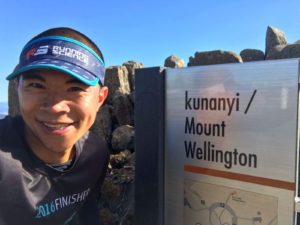
Introduction
I’m Michael – an Inner West local regularly spotted plodding in the Bay Run area along with the Running Science community. I maintain 100ks per week and have completed my fair share of fun runs up to the full distance. Having been uninjured for 4 years, I’ve learnt one thing: improvement comes from consistency, not excessive training.
Here is some lesser-known tips to stay injury-free:
- Slower is better – 90% of my volume is slower than 5:00 min/k.
- Don’t over-do speed work – 1 pw is fine for me.
- Maximise sleep – a no brainer, to the detriment of my 14 month old.
- Shoe change – I buy in doubles and never wear the same pair on consecutive days.
On the last point, I will confess being coined the Imelda-Marcos-of-the-house due to my prolific shoe collection. Unlike dear Imelda, this is not a case study in exorbitant wealth.
Importance of shoes
My simple running philosophy is (i) enjoy it like a hobby, (ii) strive for good biomechanics, (iii) invest in your safety. Choice of shoe is complimentary to all of the above.
What do I look for and use?
- Base training model: low drop, light, decent cushion, durable.
- Racing: low drop, very light, good ground field.
I have three base trainers: New Balance Zante (x2), On-Running Cloud, Saucony Fastwitch (x2).
Why do I carry multiple models?
- Works different muscles – e.g. low drop = calf work-out.
- Feet have become more ‘adaptive’ to new surfaces and other shoes.
- More fashionable – shoe colour must either match top or visor.
Why rotate from day to day?
I’ve noticed that the soles start springy and elastic but by 500k the ‘bounce’ is gone and the impact feels like a ‘thud’. Here is where niggles start to creep in – which in part is your biomechanics compensating. Injury alert.
So by rotating, the deterioration curve on a single shoe is flatter. Namely, you get a longer stretch where you are not over-compensating in your gait.
Putting this into practice
What do I look for and use? –
Base training model: low drop, light, decent cushion, durable.
Racing: low drop, very light, good ground field.
Base training models are New Balance Zante (x2), On-Running Cloud, Saucony Fastwitch (x2).
Racing shoe is the Saucony Type A6 (x3).
In general, I prefer the more cushioned models for recovery runs and long-runs (Zante) and faster models for speed-work (Fastwitch, Clouds). Fashion-sense may also be an influence: red top = red shoes. My rule is never wear the same pair on consecutive days. When do I throw out my shoes? I use Strava, which if used correctly logs the Ks against each shoe. Each shoe is binned after 600k even if that shoe looks relatively good.
To conclude, a healthy shoe collection is important for good biomechanics, injury prevention and fashion. Do not let a jealous partner or tight budget stop you from investing in your health.
